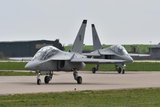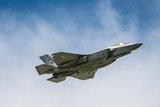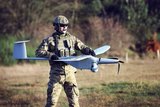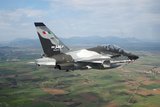Lockheed Martin has successfully test flown its Multi-Function Electronic Warfare-Air Large (MFEW-AL) airborne electronic pod payload under a fixed-wing crewed aircraft for the first time.
The company noted that it is the first time in decades US Army Electronic Warfare (EW) soldiers successfully conducted a series of airborne EW operations against a variety of threat emitters. The test flight marked a milestone which moved the system closer from system development to initial production.
The system has previously been tested under an MQ-1C Gray Eagle UAS but this test used an army fixed-wing aircraft, MC-12W, which a Lockheed Martin spokesperson said had allowed, according to the company, ‘the team to demonstrate the system is platform agnostic and can be tailored to a variety of configurations’.
The system – a single, self-contained, airborne electronic warfare pod – can be equipped on a variety of aircraft based on mission requirements, according to Lockheed Martin. The company noted that it had utilised advanced technology with a system architecture based on the C5ISR/EW Modular Open Suite of Standards, which it said would provide the essential aerial component of the integrated EW system in multi-domain operations.
Deon Viergutz, vice-president of spectrum convergence at Lockheed Martin, said: ‘This demonstration expanded upon all testing of the MFEW-AL system to date, bringing to bear a more complete hardware and software configuration that gets us closer to delivering this technology to our EW soldiers.’





















